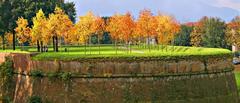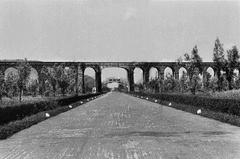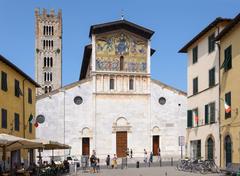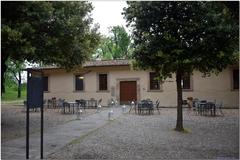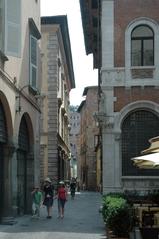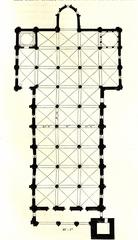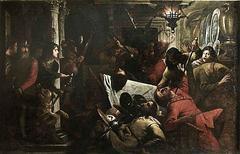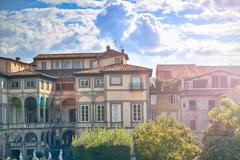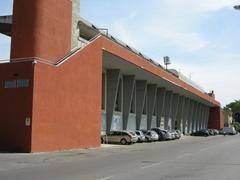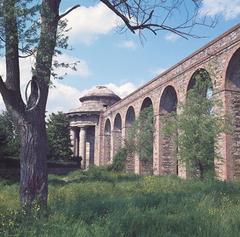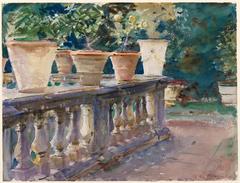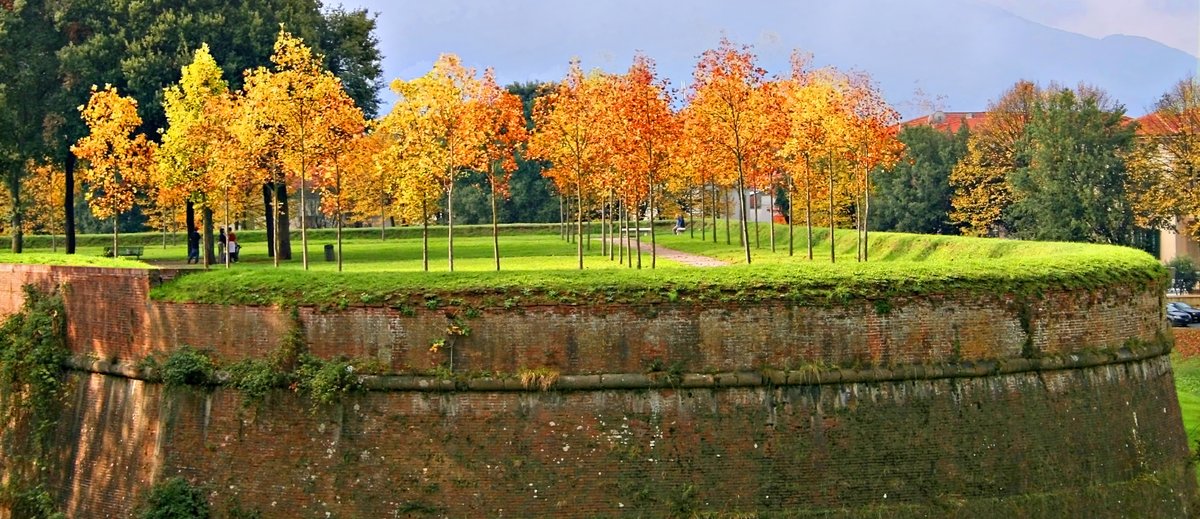
Visiting Baluardo San Donato, Lucca, Italy: Tickets, Hours, and Expert Tips
Date: 14/06/2025
Introduction
Baluardo San Donato, a prominent bastion set within the storied Renaissance city walls of Lucca, Italy, exemplifies centuries of military innovation and civic pride. Built between the 16th and 17th centuries as part of the “Mura Urbane” defense system, it has protected Lucca against regional powers and evolved into a cherished community hub. Today, Baluardo San Donato is celebrated not only for its formidable architecture and layered history but also for its lush gardens, panoramic views, and vibrant cultural events (turismo.lucca.it; luccawhatson.com).
This detailed guide will provide everything you need to plan your visit, including historical context, opening hours, ticketing details, accessibility information, and tips for exploring both the bastion and Lucca’s wider historical landscape.
Table of Contents
- Early Origins and Roman Foundations
- Medieval Expansion and Lombard Rule
- Renaissance Fortifications and the Birth of the Bastions
- Strategic Role of Baluardo San Donato
- Visiting Information: Hours, Tickets, and Accessibility
- Architectural Features and Preservation
- Cultural and Community Significance
- Activities and Experiences
- Frequently Asked Questions (FAQs)
- Plan Your Visit
1. Early Origins and Roman Foundations
The area where Baluardo San Donato stands has roots stretching back to Lucca’s earliest days. The city began as a Roman colony in 180 BC, with the first defensive walls laid out in a rectangular grid—a shape that still influences Lucca’s urban plan today. The original Roman fortifications established Lucca’s longstanding emphasis on defense and autonomy, remnants of which can still be traced in the city’s structure and archaeological sites (luccanews.org; turismo.lucca.it).
2. Medieval Expansion and Lombard Rule
After the Roman Empire’s decline, Lucca experienced successive waves of rulers, with the Lombards establishing the Duchy of Tuscia in 570 AD and making Lucca its capital. Recognizing the strategic value of the city, the Lombards expanded and strengthened its walls, setting the stage for further medieval growth. The city’s boundaries were continually expanded through the Middle Ages to accommodate a growing population and evolving military needs (luccawhatson.com; turismo.lucca.it).
3. Renaissance Fortifications and the Birth of the Bastions
The 16th century brought the threat of artillery and siege warfare, making medieval walls obsolete. Lucca responded by launching an ambitious project in 1544: the construction of the “Mura Urbane,” a bastion fortification system that took over a century to complete. Ten major bastions—including Baluardo San Donato—were built, each an engineering marvel designed to withstand cannon fire and provide overlapping fields of defense (turismo.lucca.it; luccanews.org).
Baluardo San Donato, located near Porta San Donato on the city’s western edge, was of particular strategic importance for controlling access and defending against attacks from rival Tuscan states, especially Pisa and Florence.
4. Strategic Role of Baluardo San Donato
Baluardo San Donato was integral to Lucca’s defense during repeated sieges by regional adversaries. Its robust, angular design deflected artillery, and its proximity to the city’s mint underscored Lucca’s economic and political independence. Over time, the bastion’s military function gave way to civic and cultural uses, a transformation reflected in its current status as a beloved public space (gpsmycity.com; turismo.lucca.it).
5. Visiting Information: Hours, Tickets, and Accessibility
Visiting Hours:
- City walls and Baluardo San Donato: Open daily, generally from 8:00 AM to 8:00 PM (dawn to dusk).
- Extended hours during special events, notably the Lucca Historiae Fest.
Tickets:
- Access to the bastion and city walls is free.
- Tickets may be required for guided tours or special exhibitions; check event details and the official Lucca tourism website for updates.
Accessibility:
- Paved, gently sloping paths make the bastion accessible for wheelchairs, strollers, and bicycles.
- Some underground or historical spaces may have limited accessibility.
- Restrooms, benches, and information points are available nearby (itinerary.expert; turismo.lucca.it).
How to Get There:
- Located near Porta San Donato and Piazzale Verdi.
- Easy walking distance from Lucca’s city center and train station.
- Public parking is available outside the city walls.
6. Architectural Features and Preservation
Baluardo San Donato exemplifies Renaissance military architecture with thick brick ramparts, angular bastion design, and integrated walkways. Its preservation is testament to Lucca’s commitment to maintaining historical sites as community assets. Visitors can explore well-maintained gardens, panoramic vantage points, and the adjacent Castello di Porta San Donato, now an information center (evendo.com).
Visual tip: Capture the bastion’s red-brick ramparts and green parkland, especially at sunrise or sunset for optimal light.
7. Cultural and Community Significance
Historical Role in Urban Identity
Baluardo San Donato, one of Lucca’s eleven bastions, is a symbol of resilience and autonomy, reflecting the city’s ability to defend itself against powerful neighbors and maintain independence (lucca.com).
Community Life and Events
Today, the bastion is a vital part of local life, forming a section of Lucca’s 4.2 km elevated parkland. Residents and visitors use the area for walks, cycling, picnics, and gatherings.
Cultural Festivals and Artistic Events
- Lucca Historiae Fest: Immersive historical reenactments, with Baluardo San Donato representing the Lombard era (turismo.lucca.it; luccawhatson.com).
- Lucca Comics & Games: The bastion participates in Europe’s largest comics festival (mominitaly.com).
- Concerts and Open-Air Exhibitions: Annual jazz and classical music events, plus art exhibitions, enliven the bastion throughout the year.
Educational Value
Guided tours, historical panels, and school programs explain the evolution of Lucca’s defenses and the significance of the bastion in the city’s narrative.
8. Activities and Experiences
- Walking and Cycling: The 4.2 km city wall circuit offers scenic, accessible routes for all ages (itinerary.expert).
- Guided Tours: Book ahead during festivals to gain deeper insights from local historians and costumed interpreters.
- Photography: Take advantage of panoramic city views and historic architecture.
- Events: Attend cultural festivals, markets, and live performances on the bastion lawns.
9. Frequently Asked Questions (FAQs)
Q: What are the visiting hours for Baluardo San Donato?
A: Open daily, generally 8:00 AM to 8:00 PM; extended during major events.
Q: Is there a ticket fee?
A: General access is free; some events or tours may require tickets.
Q: Is the bastion accessible for visitors with disabilities?
A: Yes, paved paths make most areas accessible; some historic spaces may be limited.
Q: Can I rent a bike?
A: Yes, bike rentals are available throughout Lucca.
Q: Are guided tours available?
A: Yes, in multiple languages; book in advance during busy periods.
Q: Are there nearby attractions?
A: Yes—Porta San Donato, the botanical gardens, historic churches, and the rest of Lucca’s city walls.
10. Plan Your Visit
Baluardo San Donato is an essential stop for anyone exploring Lucca’s historical sites. Its strategic location, architectural grandeur, and dynamic calendar of events make it suitable for visitors of all ages and interests. For an enhanced experience, consider:
- Downloading the Audiala app for audio guides and updates.
- Joining a guided tour during your visit.
- Exploring related sites, such as Lucca Cathedral and other bastions.
Stay connected through official tourism platforms for current events and visitor updates.
References
- Lucca Historiae Fest – Lucca Whatson
- City Walls and History of Lucca – Turismo Lucca
- The Walls of Lucca: What Lies Underneath? – Lucca News
- Visiting Baluardo San Donato – Lucca Whatson
- Mura di Lucca: A Complete Guide – Itinerary Expert
- Lucca Historiae Fest – Turismo Lucca
- Lucca Hidden Gems – Secret Attractions
- Lucca Old Town – Turismo Lucca
- Baluardo San Donato and Lucca’s Cultural Life – Florencetips
Explore Baluardo San Donato—where history, culture, and community converge in the heart of Lucca.
